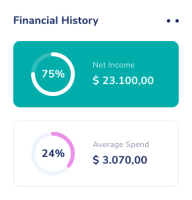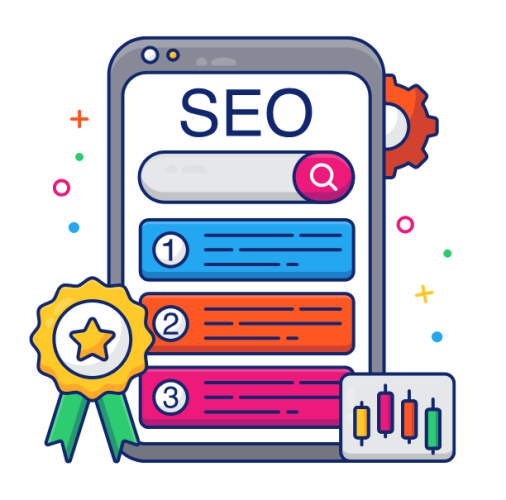Mastering SEO
How to Drive Traffic and Convert Visitors into Customers
In the fast-paced world of digital marketing, search engine optimization (SEO) is one of the most powerful tools at your disposal. SEO is a strategic process that helps businesses improve their online visibility, attract targeted traffic, and convert visitors into customers. While the concept of SEO has been around for years, it remains one of the most critical components of a successful online presence. In fact, businesses that neglect SEO are likely to miss out on significant opportunities to grow their customer base and boost their revenue.
Mastering SEO is not just about increasing website traffic; it’s about driving the right traffic—visitors who are more likely to convert into customers. When executed correctly, SEO helps brands rank higher in search engine results pages (SERPs), gain credibility, and offer a seamless user experience that encourages visitors to engage and take action.
This blog will take an in-depth look at how businesses can master SEO to drive traffic and convert visitors into customers. We’ll explore key strategies, the latest trends, and actionable tips that will help you optimize your website and content to achieve tangible business results.
What is SEO and Why Does It Matter?
SEO is the process of improving a website’s visibility in search engine results, such as Google, Bing, and Yahoo. When someone searches for a product, service, or piece of information online, search engines display the most relevant results. SEO helps businesses appear higher in those results, increasing the chances that potential customers will visit their website.
SEO matters because the majority of online experiences begin with a search engine query. According to research, about 68% of all online activities start with a search engine, and 75% of users never scroll past the first page of search results. This means that ranking higher on SERPs is crucial for capturing the attention of potential customers. Without SEO, your website may be buried under competitors, leading to missed opportunities for sales and growth.
SEO is not just about driving traffic—it’s about driving qualified traffic. The goal is to attract visitors who are actively searching for what your business offers and are more likely to convert into leads, customers, and repeat buyers.

The Key Components of SEO
SEO encompasses a wide range of tactics and strategies, but they can generally be divided into three key components: on-page SEO, off-page SEO, and technical SEO. Mastering all three is essential to building a strong foundation that drives traffic and converts visitors into customers.On-Page SEO
On-page SEO refers to the optimizations made directly on your website to improve its ranking in search results. This includes factors like keyword usage, meta tags, content quality, and internal linking. On-page SEO is critical because it ensures that search engines can understand the content on your website and index it properly.
Keyword Research and Optimization
Keyword research is the foundation of any SEO strategy. It involves identifying the search terms that potential customers are using to find products, services, or information related to your business. Once you know which keywords are relevant to your audience, you can strategically incorporate them into your website’s content to improve visibility.
Effective keyword research goes beyond simply finding high-traffic keywords. It also involves understanding user intent—what users are looking to achieve with their search. There are generally four types of search intent:
- Navigational: The user is searching for a specific website (e.g., “Nike official website”).
- Informational: The user is looking for information (e.g., “how to bake a cake”).
- Commercial Investigation: The user is researching products or services before making a purchase (e.g., “best laptops under $1000”).
- Transactional: The user is ready to make a purchase (e.g., “buy running shoes online”).
By targeting keywords that align with your audience’s intent, you can attract visitors who are more likely to convert into customers.
High-Quality Content Creation
Content is king in SEO, and high-quality content is one of the most important factors in ranking well on search engines. Your content should be relevant, informative, and engaging. It should also incorporate your target keywords naturally, without “keyword stuffing” (overusing keywords to the point that it disrupts the user experience).
Different types of content—such as blog posts, landing pages, product descriptions, and FAQs—can all be optimized for SEO. The goal is to provide value to your audience, answer their questions, and encourage them to take action, whether that’s subscribing to your newsletter, filling out a contact form, or making a purchase.
Meta Tags (Title and Meta Description)
Meta tags, such as the title tag and meta description, play a key role in how your website appears in search results. The title tag is the clickable headline that appears in SERPs, while the meta description is the brief summary that appears underneath it.
Both the title tag and meta description should be optimized with relevant keywords and written in a way that encourages users to click through to your website. A compelling title and description can significantly increase your click-through rate (CTR), which is an important ranking factor for search engines.
Internal Linking
Internal linking refers to the practice of linking to other pages within your website. This not only helps search engines crawl and index your site more efficiently but also improves the user experience by guiding visitors to relevant content. For example, if you have a blog post about “10 Tips for Effective SEO,” you might include internal links to related topics, such as “How to Conduct Keyword Research” or “The Importance of Meta Tags.”
Internal linking can also help distribute “link equity” (the value passed from one page to another through hyperlinks), which can boost the ranking potential of your web pages.
Off-Page SEO
Off-page SEO involves activities that take place outside of your website but still impact your rankings in search results. The most significant off-page SEO factor is backlinks, which are links from other websites that point to your content.
Building High-Quality Backlinks
Backlinks are like votes of confidence from other websites, signaling to search engines that your content is trustworthy and valuable. However, not all backlinks are created equal. High-quality backlinks come from authoritative websites that are relevant to your industry or niche.
There are several ways to build backlinks, including:
- Guest Blogging: Writing articles for other websites in exchange for a backlink to your site.
- Content Outreach: Reaching out to influencers, bloggers, or industry publications to share your content and request backlinks.
- Social Sharing: Promoting your content on social media platforms to increase its visibility and attract natural backlinks.
It’s important to avoid black-hat SEO techniques, such as buying backlinks or participating in link farms, as these can result in penalties from search engines.
Social Signals and Brand Mentions
Although social media signals (likes, shares, comments) are not direct ranking factors, they can still influence SEO indirectly. When your content is widely shared on social media, it can lead to increased visibility, more traffic, and additional backlinks—all of which contribute to better search rankings.
Additionally, brand mentions (when other websites mention your brand without linking to your site) can improve your online reputation and visibility. These mentions signal to search engines that your brand is gaining recognition and authority in your industry.
Technical SEO
Technical SEO refers to the backend optimizations that make it easier for search engines to crawl and index your website. Technical SEO ensures that your website is fast, mobile-friendly, and free of technical issues that could harm your search rankings.
Website Speed and Performance
Website speed is a critical factor in both user experience and SEO. Slow-loading websites frustrate users and are likely to have higher bounce rates (when visitors leave without interacting with the site). Search engines like Google prioritize fast-loading websites in their rankings, especially on mobile devices.
You can improve your website’s speed by compressing images, enabling browser caching, and using a content delivery network (CDN). Regularly testing your website’s performance using tools like Google PageSpeed Insights can help identify areas for improvement.
Mobile-Friendliness
With more than half of all web traffic coming from mobile devices, mobile-friendliness is essential for SEO. Google uses mobile-first indexing, meaning it primarily evaluates the mobile version of your website when determining rankings. This makes it crucial to ensure that your site is responsive, meaning it adapts to different screen sizes and provides a seamless experience on smartphones and tablets.
A mobile-friendly design includes features like easy navigation, readable text, and buttons that are large enough to tap on a touchscreen.
Secure and Accessible Website (HTTPS)
Google prioritizes secure websites in its search results, so it’s important to ensure your website uses HTTPS (Hypertext Transfer Protocol Secure). HTTPS encrypts data between the user’s browser and your website, providing a more secure experience. Websites that don’t use HTTPS are labeled as “not secure” in browsers, which can deter visitors and harm your SEO efforts.
Structured Data and Schema Markup
Structured data, also known as schema markup, helps search engines understand the content on your website more effectively. It provides additional context about your pages, such as product details, reviews, event dates, and more. Implementing schema markup can improve your visibility in SERPs by enabling rich snippets, such as star ratings or product prices, which can increase your CTR.

Driving Traffic with SEO: Proven Strategies
Now that we’ve covered the core components of SEO, let’s explore some proven strategies for driving traffic to your website.
- Focus on Long-Tail Keywords
Long-tail keywords are longer, more specific phrases that users search for when they’re closer to making a purchasing decision. For example, instead of targeting a broad keyword like “running shoes,” you might target “best running shoes for flat feet” or “affordable running shoes for beginners.”
Long-tail keywords typically have lower search volume but higher conversion potential because they capture users who are further along in the buying process. Additionally, long-tail keywords are less competitive, making it easier to rank for them
- Optimize for Local SEO
If your business has a physical location or serves a specific geographic area, local SEO is crucial. Local SEO focuses on optimizing your website for location-based searches, such as “plumber near me” or “best coffee shop in Chicago.”
Key tactics for local SEO include optimizing your Google My Business profile, using location-specific keywords, and encouraging customer reviews. Local SEO can help your business appear in the coveted “local pack” of Google search results, which displays the top local businesses related to a search query.
- Leverage Content Marketing
Content marketing and SEO go hand-in-hand. Creating valuable, relevant, and optimized content on a consistent basis helps you attract organic traffic and establish your brand as an authority in your industry.
One effective content marketing strategy is to create pillar content—comprehensive, in-depth articles or guides on key topics related to your business. You can then create related blog posts or smaller pieces of content that link back to your pillar content, forming a content “hub.” This approach not only helps with internal linking but also encourages other websites to link to your valuable resources, boosting your SEO.



Monitor and Update Your SEO Strategy Regularly
SEO is not a set-it-and-forget-it strategy. Search engines frequently update their algorithms, and competitors are constantly optimizing their websites. To stay competitive, it’s important to monitor your SEO performance regularly and make adjustments as needed.
Tools like Google Analytics, Google Search Console, and third-party SEO software (e.g., SEMrush, Moz, or Ahrefs) can help you track your rankings, organic traffic, and user behavior. By staying on top of trends and continuously improving your SEO strategy, you can maintain your visibility and drive consistent traffic to your site.
Converting Visitors into Customers: Turning Traffic into Revenue
Driving traffic to your website is only half the battle. The next step is converting those visitors into customers. Let’s explore how you can optimize your website and user experience to encourage conversions.
- Improve User Experience (UX)
A seamless, user-friendly website is essential for converting visitors into customers. If your website is difficult to navigate, slow to load, or cluttered with too much information, visitors are likely to leave without taking action.
Key elements of a good user experience include:
- Simple Navigation: Make it easy for visitors to find what they’re looking for with a clear menu and well-organized content.
- Fast Loading Speed: As mentioned earlier, a fast-loading website is critical for both SEO and conversions.
- Clear Calls-to-Action (CTAs): Use compelling, action-oriented language in your CTAs to guide visitors toward the desired action (e.g., “Buy Now,” “Get a Free Quote,” “Sign Up Today”).
- Mobile Optimization: Ensure that your website is responsive and provides a seamless experience on mobile devices.
- Use A/B Testing
A/B testing, also known as split testing, involves comparing two versions of a web page or element (such as a CTA button or headline) to see which one performs better. By continuously testing different elements of your website, you can optimize for higher conversion rates.
For example, you might test different colors for your CTA buttons, alternate headlines for a landing page, or various layouts for your product pages. A/B testing allows you to make data-driven decisions that can significantly impact your conversion rates.
- Leverage Social Proof
Social proof, such as customer reviews, testimonials, and case studies, can have a powerful impact on conversions. Visitors are more likely to trust your business if they see that others have had positive experiences with your products or services.
Displaying customer reviews prominently on product pages, highlighting testimonials on landing pages, and showcasing case studies in your blog can help build trust and encourage visitors to make a purchase.
- Offer Personalized Experiences
Personalization is key to improving conversion rates. By leveraging data about your visitors’ behavior, preferences, and past interactions with your brand, you can deliver personalized experiences that resonate with them.
For example, you can use dynamic content to show personalized product recommendations based on a visitor’s browsing history or offer special discounts to returning customers. Personalized email campaigns, such as abandoned cart reminders or product recommendations, can also help drive conversions.
- Optimize Your Checkout Process
For e-commerce websites, the checkout process is one of the most critical points of conversion. A complicated or confusing checkout process can lead to cart abandonment and lost sales.
To optimize your checkout process:
- Simplify Forms: Only ask for essential information, and use autofill options to make it easier for customers to complete their purchase.
- Provide Multiple Payment Options: Offer a variety of payment methods, including credit cards, PayPal, and mobile wallets, to accommodate different preferences.
- Ensure Security: Display trust signals, such as SSL certificates and secure payment icons, to reassure customers that their data is safe.
- Use Retargeting to Bring Visitors Back
Not all visitors will convert on their first visit to your website. Retargeting allows you to stay top-of-mind by displaying ads to users who have previously visited your site but didn’t take action.
By using retargeting ads on platforms like Google, Facebook, and Instagram, you can remind visitors of the products or services they viewed and encourage them to return to complete their purchase. Retargeting is an effective way to recover lost sales and improve overall conversion rates.

Mastering SEO to Drive Traffic and Convert Visitors into Customers
SEO is a powerful and essential tool for driving targeted traffic to your website, but its true value lies in converting that traffic into customers. By mastering the key components of SEO—on-page, off-page, and technical—and implementing proven strategies for driving traffic, you can build a strong online presence that attracts the right audience.
However, traffic alone is not enough. To turn visitors into customers, you need to focus on optimizing the user experience, offering personalized content, and ensuring a seamless path to conversion. Whether you run an e-commerce store, a service-based business, or a content-driven platform, understanding how to convert traffic into revenue is the key to long-term success.
By continuously monitoring and refining your SEO strategy, leveraging data-driven insights, and optimizing for conversions, you can unlock the full potential of SEO and drive sustained growth for your business. The combination of SEO and conversion optimization not only increases your visibility but also turns your website into a powerful engine for customer acquisition and retention.
